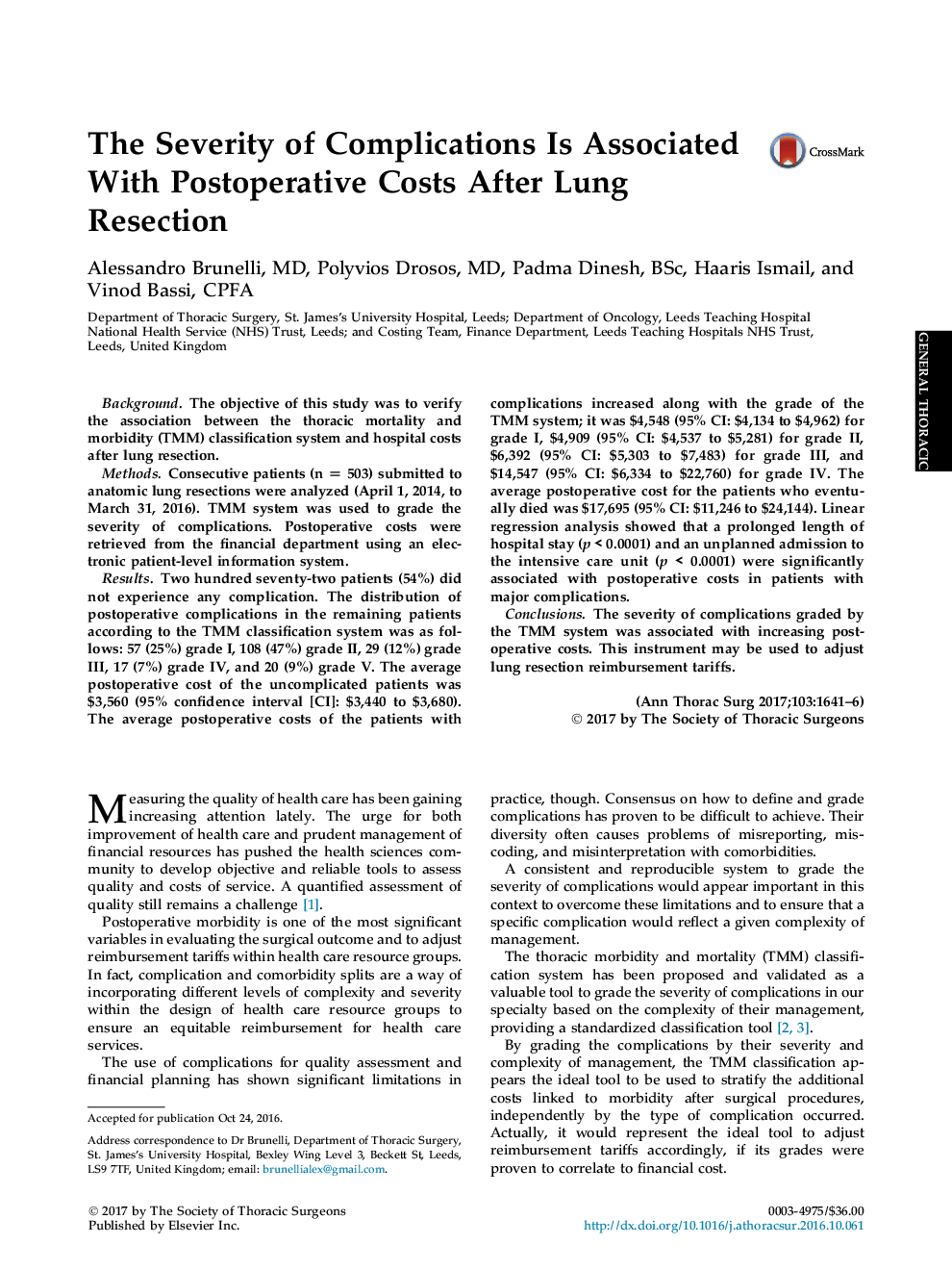| Article ID | Journal | Published Year | Pages | File Type |
|---|---|---|---|---|
| 5596974 | The Annals of Thoracic Surgery | 2017 | 6 Pages |
BackgroundThe objective of this study was to verify the association between the thoracic mortality and morbidity (TMM) classification system and hospital costs after lung resection.MethodsConsecutive patients (n = 503) submitted to anatomic lung resections were analyzed (April 1, 2014, to March 31, 2016). TMM system was used to grade the severity of complications. Postoperative costs were retrieved from the financial department using an electronic patient-level information system.ResultsTwo hundred seventy-two patients (54%) did not experience any complication. The distribution of postoperative complications in the remaining patients according to the TMM classification system was as follows: 57 (25%) grade I, 108 (47%) grade II, 29 (12%) grade III, 17 (7%) grade IV, and 20 (9%) grade V. The average postoperative cost of the uncomplicated patients was $3,560 (95% confidence interval [CI]: $3,440 to $3,680). The average postoperative costs of the patients with complications increased along with the grade of the TMM system; it was $4,548 (95% CI: $4,134 to $4,962) for grade I, $4,909 (95% CI: $4,537 to $5,281) for grade II, $6,392 (95% CI: $5,303 to $7,483) for grade III, and $14,547 (95% CI: $6,334 to $22,760) for grade IV. The average postoperative cost for the patients who eventually died was $17,695 (95% CI: $11,246 to $24,144). Linear regression analysis showed that a prolonged length of hospital stay (p < 0.0001) and an unplanned admission to the intensive care unit (p < 0.0001) were significantly associated with postoperative costs in patients with major complications.ConclusionsThe severity of complications graded by the TMM system was associated with increasing postoperative costs. This instrument may be used to adjust lung resection reimbursement tariffs.
